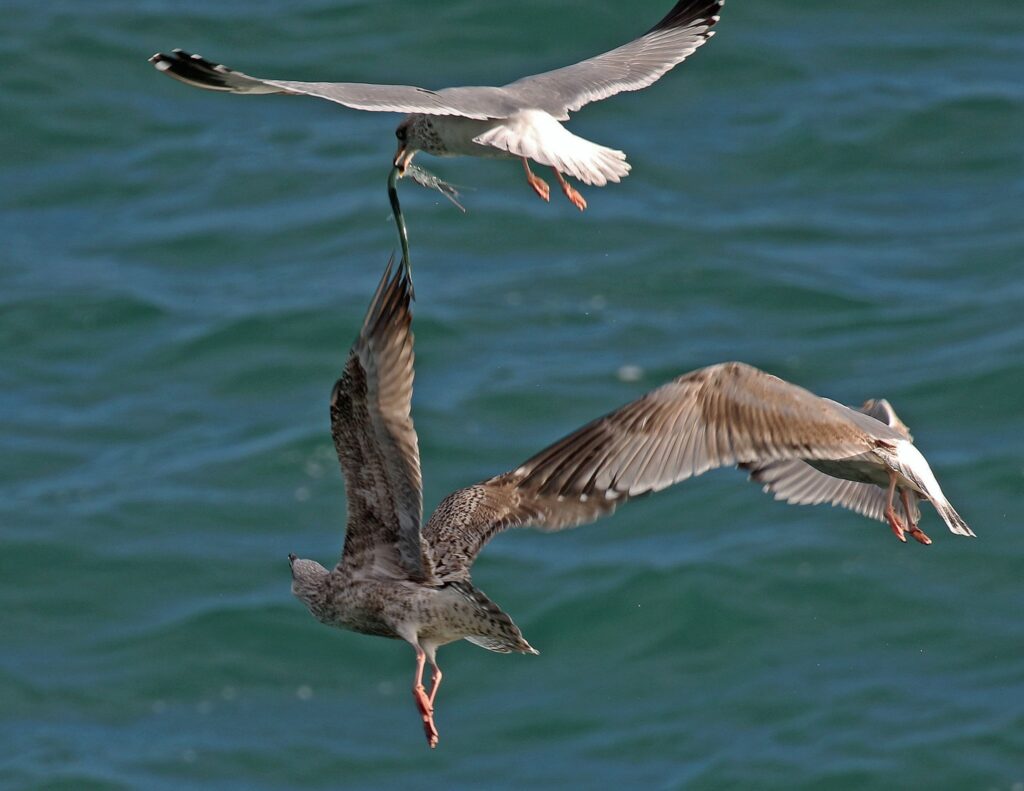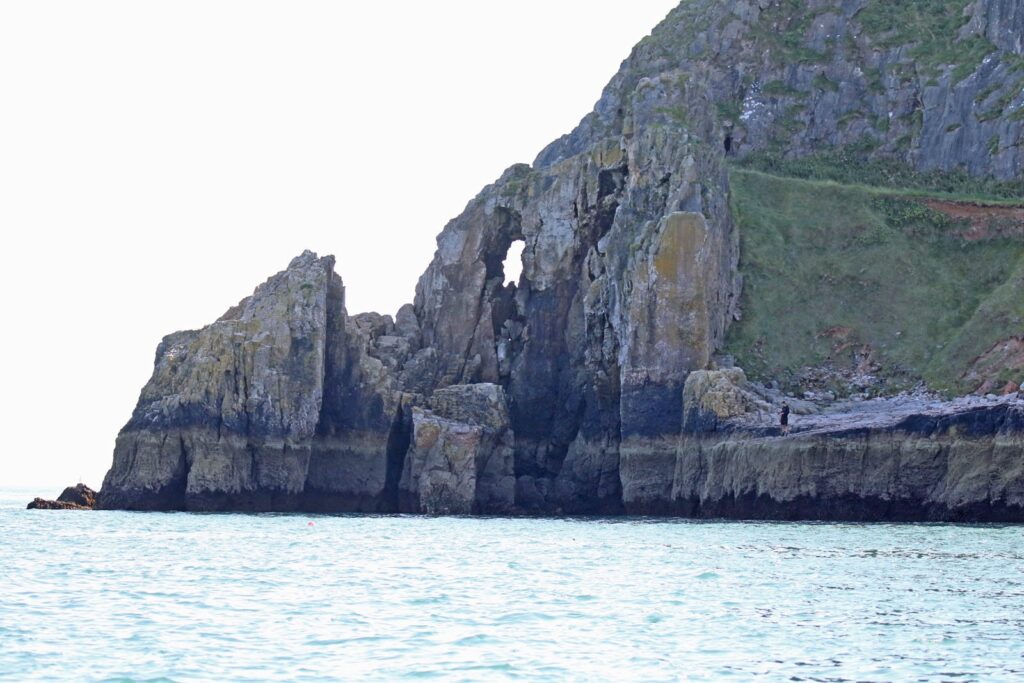We all know depictions of food chains and food webs from books or museums, which show how small herbivores or planctivores are eaten by larger predators which are again eaten by even larger predators. But it´s incredibly rare to see such a thing happen literally at a time in reality.
Wildlife photographer Bill Coulson from Brixham, Devon, managed to snap a shot of such a highly unusual scene. On the coast of Lyme Bay, in the South of England, he took photos of seabirds from a seawatch point. Among those birds was a European herring gull (Larus argentatus) which had a freshly caught garfish (Belone belone) in its beak. This would have been already a rather interesting and also not really common thing to see, but the close ups of the photos revealed something even much more spectacular. The garfish in the gull´s beak had again something in its beak-like jaws, a sprat (likely Sprattus sprattus) which it had just caught and half-eaten, moments before it became prey itself.

Here is another detail photo. You can see quite well how the garfish swallowed the sprat head first:

It is really extremely rare that something like this is photographed or filmed. I am only aware of a few other comparable cases, which show such „life action foodchains“, what makes Bill´s photos even more conspicuous. Some years ago, my friend Dean Lomax asked me if I could help to search for photos like this, when he was working on his wonderful book Locked in Time: Animal Behavior Unearthed in 50 Extraordinary Fossils. The book deals with 50 unique cases of fossils, which show us very special insights into the lives of certain prehistoric animals. The book was illustrated by Bob Nicholls, who created wonderful depictions of those animals when they were still alive (or in some cases, just dead). In some chapters, photos of comparable modern day animals are included, for example a case of a crocodile which had a substantial amount of its upper jaw broken off, in the chapter about the highly unlucky Pelagosaurus from Dotternhausen, which had its lower jaw broken.
Bill´s photos of the gull with the garfish and sprat would have been absolutely perfect for the chapter about cases of foodchains in the fossil record. This includes a fossil from Messel Pit of a small boid of the species Eoconstrictor fischeri which had eaten a basilisk lizard of the species Geiseltaliellus maarius which again had a beetle in its stomach, which was still so well preserved, that some of its colours remained. Nearly the the only comparable case I could find was an osprey which had caught a small shark that had still a smaller fish in its mouth. Sadly we couldn´t find another fitting modern day analoge which could be used for the book. I really have to write a review about this book, which I highly recommend you to read.
As you can see, the garfish was a quite sought-after prey:

Perhaps because the dessert was already included as well?

It is really fantastic that Bill could also document the ongoing struggle for the gar.

The photos were taken from a high-lying seawatch point at Berry Head:

Another photo of the same seawatch point, photographed from the sea.

Here you can a nearby old limestone quarry, which was closed in the 1960s. The landscape is really wonderful, I would love to visit it anytime.

Many thanks to Bill for sending me the photos of this incredible occurence! Make sure to take a look at his Twitter profile, he has posted many other fantastic nature photos.
